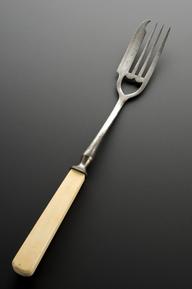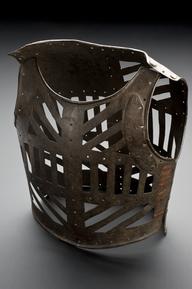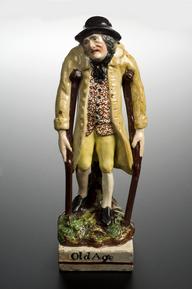


Articulated artificial left hand and forearm, iron, European, 16th century
Surgical amputations are referred to by Hippocrates. They were for many years a main function of the surgeon. This artificial hand dates from the 1500s. Most limbs were amputated in this era due to war injuries or accidents. It consists of a metal casing. This wrapped around the forearm stump and was secured by metal or leather straps. An internal mechanical structure (now missing) may have allowed the fingers basic movement. The fingers were created as a solid mass. However, they can flex at the largest knuckle joint.
French military surgeon Ambroise Paré (1510-1590) gained experience as a private surgeon to generals in the French Army during the 1500s. His books on surgery described new operations and treatments. These writings describe artificial substitutes he devised to replace amputated limbs. Some were simple. Others were elaborate highly-mechanised devices that simulated the natural movement and function of the limb.
Details
- Category:
- Orthopaedics
- Collection:
- Sir Henry Wellcome's Museum Collection
- Object Number:
- A634417
- Materials:
- iron
- Measurements:
-
overall: 95 mm x 120 mm x 320 mm, .64kg
- type:
- artificial hand




